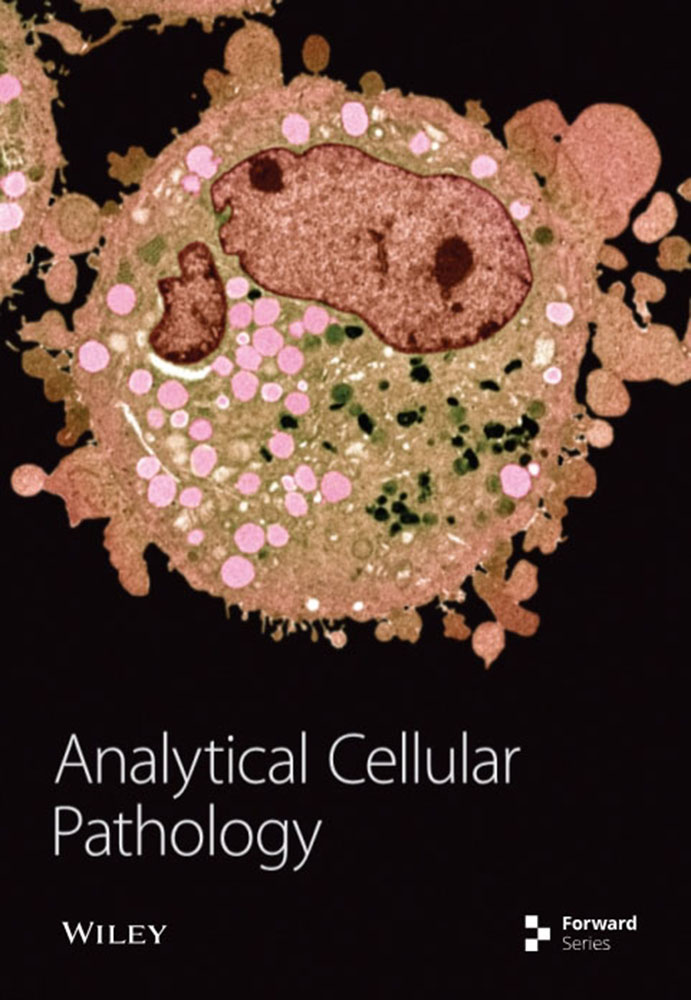Hsa_circ_0000190通过调控miR-1253/IL-6轴促进NSCLC细胞对顺铂的抗性
IF 2.7
4区 医学
Q3 CELL BIOLOGY
引用次数: 0
摘要
研究背景本研究探讨了非小细胞肺癌(NSCLC)顺铂(DDP)治疗耐药性的机理基础,以确定消除这种化疗耐药性的有效方法。研究方法通过定量实时聚合酶链式反应(qPCR)方法分析了NSCLC中hsa_circ_0000190、miR-1253和白细胞介素6(IL-6)的表达情况,同时用CCK-8检测法评估了这些肿瘤细胞抵抗DDP治疗的能力。利用 RNA 免疫沉淀和双荧光素酶报告实验评估了不同 RNA 分子之间的相互作用。结果研究发现,对DDP具有抗性的NSCLC细胞系和组织表达较高水平的hsa_circ_0000190,在NSCLC细胞中敲除这种circRNA与对DDP暴露更敏感有关。进一步的研究发现,miR-1253 是 hsa_circ_0000190 的靶点,敲除 hsa_circ_0000190 能够恢复对 DDP 的敏感性主要归因于这种 circRNA 能够抑制 miR-1253 的活性。在这种情况下,IL-6 被确定为 miR-1253 的一个主要靶点,miR-1253 部分通过阻止 IL-6 上调来调节 NSCLC 细胞的化疗耐药性。结论这些数据共同表明,hsa_circ_0000190能通过调节miR-1253/IL-6轴活性来促进NSCLC细胞的DDP化疗耐药性,突出了一种可作为靶点的新型途径,从而指导更有效地诊断和治疗DDP耐药性肿瘤。本文章由计算机程序翻译,如有差异,请以英文原文为准。
Hsa_circ_0000190 Promotes NSCLC Cell Resistance to Cisplatin via the Modulation of the miR-1253/IL-6 Axis
Background. This study explored the mechanistic basis for nonsmall cell lung cancer (NSCLC) cisplatin (DDP) treatment resistance in an effort to define effective approaches to abrogating the emergence of such chemoresistance. Methods. Analyses of NSCLC expression of hsa_circ_0000190, miR-1253, and interleukin 6 (IL-6) were conducted via a quantitative real-time polymerase chain reaction (qPCR) approach, while the ability of these tumor cells to resist DDP treatment was evaluated with a CCK-8 assay. Interactions between different RNA molecules were assessed using both RNA immunoprecipitation and dual-luciferase reporter assays. Results. NSCLC cell lines and tissues resistant to DDP were found to express higher levels of hsa_circ_0000190, and knocking down this circRNA in NSCLC cells was associated with greater sensitivity to DDP exposure. Further research identified miR-1253 as a hsa_circ_0000190 target, with the ability of hsa_circ_0000190 knockdown to restore DDP sensitivity being largely attributable to the ability of this circRNA to suppress miR-1253 activity. IL-6 was identified as a major miR-1253 target in this context, with miR-1253 regulating chemoresistance in NSCLC cells in part by preventing IL-6 upregulation. Conclusion. Together, these data suggest that hsa_circ_0000190 can promote DDP chemoresistance in NSCLC cells through its ability to modulate miR-1253/IL-6 axis activity, highlighting a novel pathway that can be targeted in an effort to guide the more effective diagnosis and management of DDP-resistant tumors.
求助全文
通过发布文献求助,成功后即可免费获取论文全文。
去求助
来源期刊

Analytical Cellular Pathology
ONCOLOGY-CELL BIOLOGY
CiteScore
4.90
自引率
3.10%
发文量
70
审稿时长
16 weeks
期刊介绍:
Analytical Cellular Pathology is a peer-reviewed, Open Access journal that provides a forum for scientists, medical practitioners and pathologists working in the area of cellular pathology. The journal publishes original research articles, review articles, and clinical studies related to cytology, carcinogenesis, cell receptors, biomarkers, diagnostic pathology, immunopathology, and hematology.
 求助内容:
求助内容: 应助结果提醒方式:
应助结果提醒方式:


